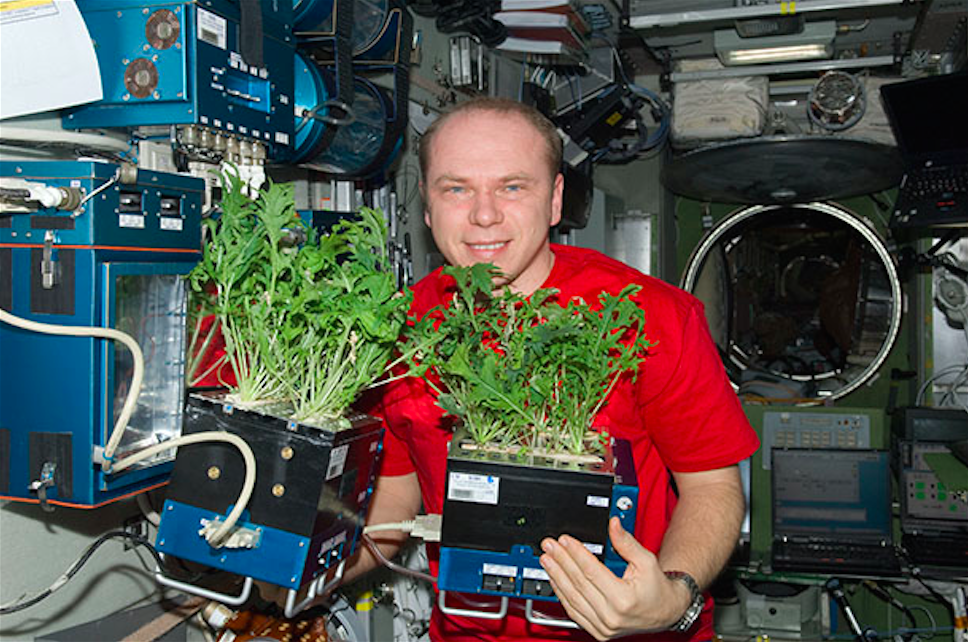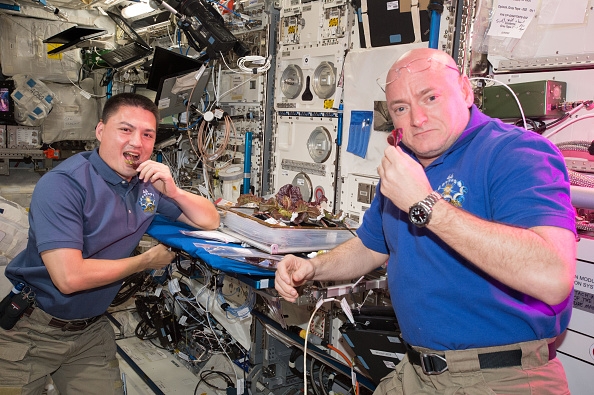Yes. Space Garden. Gardens… IN SPACE. It does sound like one of those old television tropes. Like Angry Birds… IN SPACE, or Swiss Family Robinson… IN SPACE. This time, though, it’s not some wacky characters going through dramatic and overplayed storylines with a single shift in atmosphere. No, it’s literally vegetables grown in space.
Back in the old days of 2010, NASA began a study on the effects of zero gravity on vegetable growth. They wanted to know if it was possible, if it was safe, if weird microorganisms would grow on the plants, if there was a way to safely sanitize the plants, and how to optimize the water and nutrients each plant received.
All of the plants were grown in special pods. These pods were outfitted with “pillows” containing soil and seed. The light was provided by red, blue, and green LED lights. The red and blue wavelengths are the only ones truly required to grow the plants, but the green ones were added so the plants didn’t end up purple, which I think is a total bummer, because purple alien space plants would have been awesome. If you want more information about the pods, lighting, and experiment, take a look at this NASA article.

Photo courtesy of thesavory.com
5 years later, 44 members of the Expedition Crew were able to eat the fruits, I mean lettuce, of their labor. Half of the crop was harvested and sanitized with a citric-acid based food-safe sanitizing wipe before being consumed, while the other half was sent back home to earth.
What were the effects of zero gravity on the plants, you ask? This National Geographic article, written in 2012, states that it’s mostly in the way the roots grow. It was assumed that gravity was necessary for the roots of the plants to orient themselves in the right fashion, but the research found that the roots will grow away from the light source and towards nutrients and water regardless of gravity.
A space garden is necessary for the creation of sustainable long-term food substances. As Shane Topham stated in the NASA article Growing Plants and Vegetables in a Space Garden, “I don’t see future space crews leaving the Earth for long durations without having the ability to grow their own food,” said Topham. “The knowledge that we are gaining is enabling us to extend our exploration and future colonization of space.” So if humans are ever going to step foot on Mars, then growing their own food on the way will be a required component of the trip.
Astronauts already have some pretty interesting food specially made for them. Take a look at this article, 7 Facts About Space Food That Are Out of This World.

photo courtesy of nasa via getty images
Space Gardens also provide comfort and relaxation for all crew members, as well as providing important information for the improvement of on earth greenhouse systems. NASA has done a lot already to help out the food industry. Here are 6 Food Related Innovations You Can Thank NASA for.
With each new crop grown, experiment done, and data found, we move one step closer to terraforming and colonizing other planets. So the television tropes really can come true. Thanks to the vegetable we grow on the space station today, Angry Birds in Space can happen in the future.


